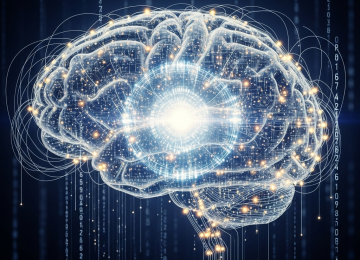The 5 Best AI Fact Check Tools for Online Accuracy
In the digital age, information spreads faster than ever, but not all of it is accurate. The proliferation of misinformation and “fake news” has made it incredibly difficult to distinguish truth from fiction. This is where the modern fact check process, supercharged by artificial intelligence, becomes an essential skill and tool for every internet user. AI-powered platforms can analyze vast amounts of data in seconds, cross-referencing claims against reputable sources to provide an instant verdict on a piece of content’s reliability. Navigating this new landscape requires a new set of tools designed for the challenges of today’s information ecosystem.

Why Manual Verification Is No Longer Enough
For decades, fact-checking was the domain of journalists and researchers who painstakingly verified sources and claims. While human oversight remains critical, the sheer volume and velocity of information online have overwhelmed manual methods. Misinformation is often designed to be emotionally provocative, encouraging rapid sharing without critical thought. This is compounded by sophisticated tactics like deepfakes and manipulated images that are nearly impossible for the untrained eye to detect.
Furthermore, confirmation bias—our natural tendency to favor information that confirms our existing beliefs—makes us all vulnerable. We are more likely to accept a false claim if it aligns with our worldview and share it without a second thought. An automated fact check tool acts as an impartial third party, cutting through emotional appeals and personal biases to deliver an objective analysis. These tools don’t get tired, they don’t have political leanings, and they can process millions of data points, from news articles to scientific studies, in the time it would take a human to read a single paragraph.
The Ultimate AI Fact Check Toolkit
Choosing the right tool can make all the difference. Some are designed as browser extensions that work in the background, while others are standalone platforms for deep-dive investigations. We’ve reviewed the landscape to find the most effective and user-friendly AI-powered solutions to help you verify information before you trust or share it.

Here are our top 5 picks for AI fact check tools:
- LogiCheck AI: A powerful browser extension that provides a real-time “trust score” for news articles and social media posts. It analyzes the text for biased language, checks the sources cited, and cross-references key claims with a database of verified fact-checks from organizations like Reuters and the Associated Press. Its simple color-coded system (green, yellow, red) makes it easy to assess content at a glance.
- Veritas Lens: More than just a text analyzer, Veritas Lens specializes in visual media. You can upload an image or video, and its AI will perform a reverse image search, analyze metadata, and scan for signs of digital manipulation. It’s an essential tool for debunking altered photos and out-of-context videos that are commonly used to spread disinformation.
- SourceRank: This platform focuses on the credibility of the source itself. Instead of just checking a single article, SourceRank evaluates the entire domain, analyzing its historical accuracy, funding sources, and adherence to journalistic standards. It provides a detailed report on a website’s potential biases and overall reliability, helping you decide whether to trust anything it publishes.
- ClaimBuster: Developed by researchers, ClaimBuster is designed to identify “check-worthy” claims within a block of text. It’s less of a final verdict and more of a first-pass tool. You can paste text from a speech or article, and the AI will highlight statements that are factual claims and should be investigated further. This is great for journalists, students, and researchers who need to pinpoint specific points for verification.
- FactFlow Dashboard: This is a comprehensive dashboard that aggregates real-time fact-checks from multiple trusted organizations around the world. Its AI categorizes trending misinformation by topic and region, allowing users to see what false narratives are currently circulating. It’s the perfect tool for understanding the broader misinformation landscape beyond a single article.
Building Your Digital Literacy Skills
While AI tools are incredibly powerful, they are most effective when combined with human critical thinking. Technology should augment, not replace, our own judgment. Building strong digital literacy skills is the ultimate defense against misinformation. According to a guide on spotting misinformation by the experts at Reuters, several key human-led steps remain vital.
Here are some fundamental practices to adopt:
- Consider the Source: Before you even read the article, look at the website. Is it a reputable news organization or a blog you’ve never heard of? Look for an “About Us” page and transparency regarding its funding and authors.
- Check for Emotionally Charged Language: Misinformation often uses sensationalist headlines and emotionally manipulative language to provoke a reaction. Legitimate news reporting is typically more measured and objective in its tone.
- Look for Evidence: Does the article cite its sources? Does it link to original research or quote multiple experts? A lack of verifiable evidence is a major red flag. Be wary of claims that cite “anonymous insiders” or “leaked documents” without any proof.
- Perform a Lateral Read: Don’t just stay on the page. When you encounter a claim, open a new tab and search for it yourself. See what other, independent sources are saying about the topic. This simple act can often debunk a false story in seconds.
- Verify Images and Videos: As mentioned with Veritas Lens, visual media is easily manipulated. Use a reverse image search (like Google Images or TinEye) to see where else an image has appeared. It may be an old photo being used in a new, misleading context.
By combining these critical thinking habits with the power of an AI fact check tool, you can create a robust defense against the flood of misinformation online. Staying informed is more important than ever, but it’s equally important to ensure the information you consume and share is accurate, reliable, and true.















